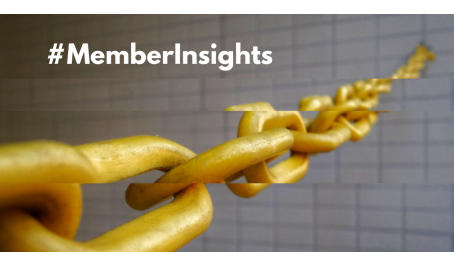- Membership
- The NY Chapter
- Our Career Services
- Committees
- National FACC Network
The Supply Chain’s Answer to COVID-19: Sustainable Procurement Programs
Member news | May 27, 2020
The FACC-NY network is composed of a diverse mosaic of talented, experienced, and open-hearted professionals united by a desire to share their knowledge, nurture meaningful connections and succeed professionally. In this Member Insights series, we invite a guest member to contribute timely and relevant tips for adapting your activities to overcome immediate challenges and plan for the long-term.
Pierre-François Thaler is the co-CEO and co-founder of our member company EcoVadis, the world’s most trusted provider of business sustainability ratings, with over 65,000 rated companies in its network. He brings over 25 years’ experience in business development and customer success, focused on innovative solutions for procurement organizations. Prior to joining EcoVadis, Pierre-Francois was director of the Ariba procurement BPO business. He was also previously CEO of B2Build SA, the first B2B marketplace for the European construction industry. He is a frequent lecturer on Sustainable Procurement and the author of multiple studies in this area. Pierre-François is an electrical engineer by trade, holding a Master of Science from Supelec and a MBA from Insead.

Global supply chains and workplaces have been fundamentally disrupted and transformed during COVID-19. As procurement leaders race to respond and implement programs to maintain business continuity, they will go through four key phases: reaction, resilience, rebound and a new normal. Here are the four essential sustainable procurement considerations for each phase:
Phase One: Reaction
The way your organization reacts to the ongoing pandemic is crucial. First and foremost, it is critical that you diagnose potential damage and focus on the needs of your business and society. This means operating in a way that ensures the safety of your employees and minimizes supply chain disruptions. Many companies have moved to remote processes and technologies, allowing their employees to minimize exposure while also granting operational normalcy. Some businesses, like Pernod Ricard, have taken worldwide action by refocusing their initiatives to provide local support, including using their alcohol products to create hand sanitizer. It’s important to identify and engage all suppliers across the value chain and connect key sustainability issues with the challenges they face – doing so prioritizes employee health, maintains safe working conditions, ensures environmentally-friendly practices, and enables positive risk, business and sustainability outcomes.
Phase Two: Resilience
Resiliency allows you to develop your go-forward strategy while still being reactive when needed, helping to preserve your business and manage risk tradeoffs. Here, it’s a must to strategically manage spend, find alternative sources for disrupted categories and support vulnerable suppliers. Unilever recently committed €500M of cash flow relief across its extended value chain through early payments for its most vulnerable small- and medium-sized suppliers. In order to survive in the mid- to long-term, you must ensure your supply chain partners are successful as well. The best way to do this is by developing sustainable procurement and supplier relationship management programs that employ the necessary data and tools to increase visibility, map risks and collaboratively improve performance.
Phase Three: Rebound
Once COVID-19 begins to abate, brand reputation and trust will come into focus. Reputation will be shaped based on how an organization acted during the crisis, how they treated their workers, customers and suppliers, and if they upheld responsible business values. We are already seeing some organizations move toward this phase as they compile key learnings and incorporate them into new strategies, reigniting their business so that it is smarter, more socially conscious and better than before. This includes vetting, diversifying and screening all supply sources and training teams in sustainability risks and indicators. Now more than ever, building an adaptable and sustainable future starts in the supply chain.
Phase Four: A New Normal
This crisis has caused significant market uncertainty and numerous changes to procurement and sourcing strategies. Increasing engagement on sustainability practices will create built-in resilience across the value chain. Many are pointing to this as an opportunity to shift to a circular economy with more local and flexible supply chains, while others are focused on revamping their supplier selection criteria. No matter the approach, we must anticipate the new paradigm by readying our supply bases and prioritizing sustainability programs.
The decisions made during these four phases have a cascading effect on short-term resilience and long-term success – make sure you are strategizing accordingly. Check out the EcoVadis Four Phases of COVID-19 Supply Chain Response infographic to learn more about supply chain tactics for each phase and the ways companies can address them.

